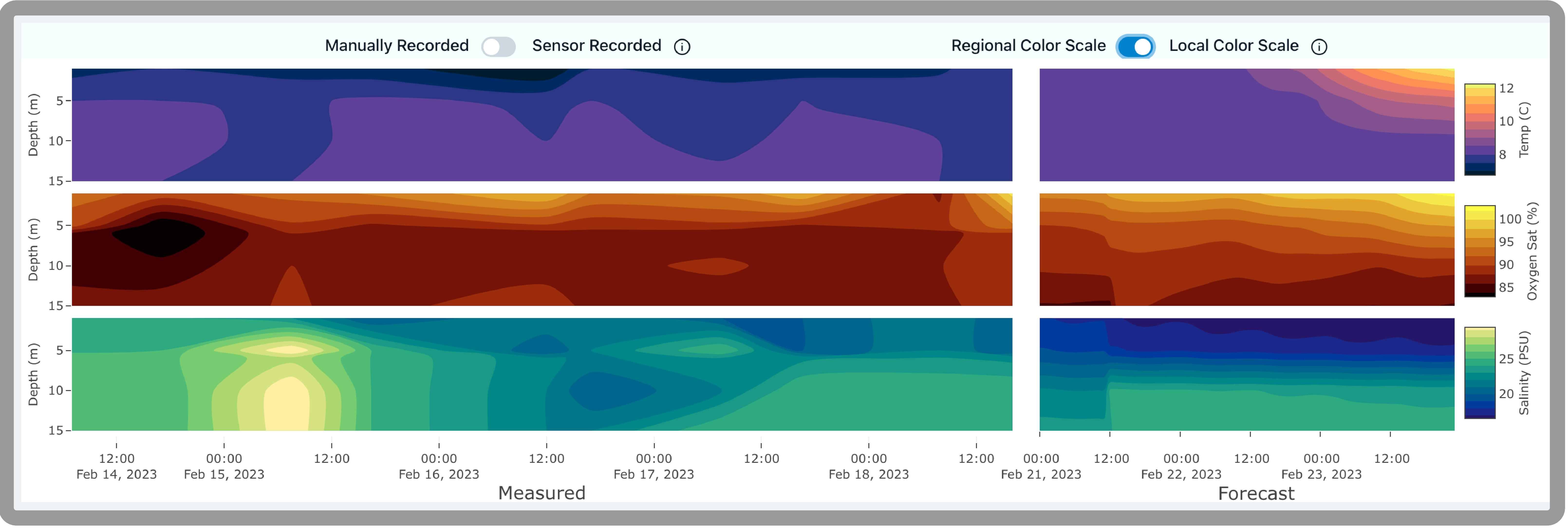Forecasting Extreme Events with Confidence
One of the most common questions we’re asked is “how accurate are Scoot’s ocean forecasts?” Fish farmers want to have confidence that the forecast coming out of SeaState is something that can be acted on by the team. This is a good question and it has some important nuance: we’d argue the real focus in evaluating a forecast should be understanding a model’s ability to identify an extreme event.
To address this, we compared the last year of SeaState forecasts to observed conditions in British Columbia. During that time 278 of our forecasts predicted that dissolved oxygen would drop below 70% saturation in three days’ time. Seventy percent is a cautionary threshold for beginning to take action on a site at high risk of experiencing an extreme event. Of those 278 forecasts, 252 were validated with actual low dissolved oxygen observations at the farm three days later. Averaging across sites, the mean probability associated with each of those low dissolved oxygen forecasts was 85%.
What this means for farms running SeaState is that when they see a low oxygen event in their forecast they know that it's time to prepare mitigation, consider pulling back on feeding, and act proactively. Moreover, with 85% probability producers are confident that these actions are worthwhile. This is a game-changer compared to the status quo, where farms are always surprised by extreme ocean conditions and the team is stuck reacting as the event unfolds.
Want to learn more about our physics-based forecasts of oxygen, temperature, and salinity? Check out this previous blog post, or reach out to info@scootscience.com to schedule a live demo.

An example site-specific forecast from SeaState. Contour plots of essential ocean variable depth profiles over time. Data to the left of the divider is collected from the farm site, data to the right is the three-day forecast.